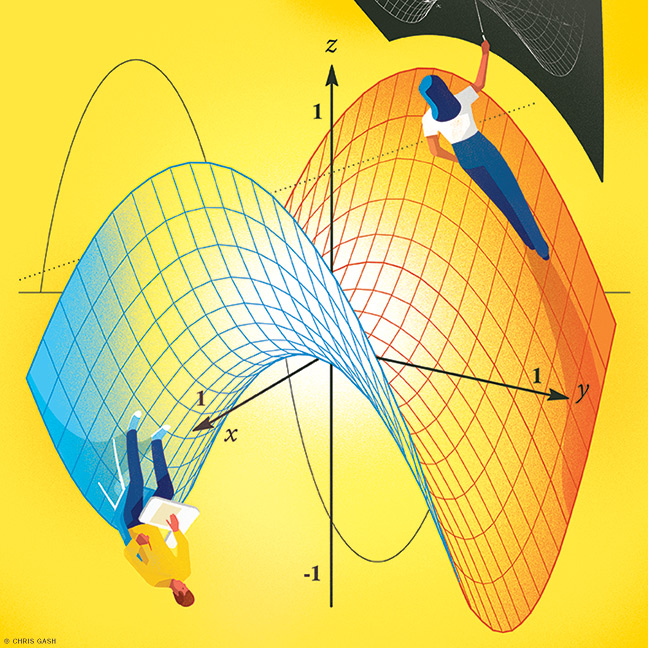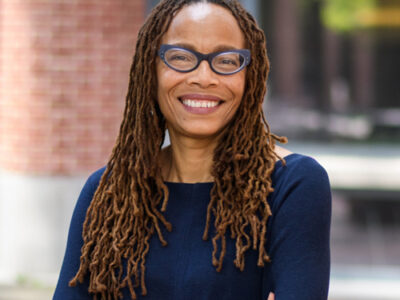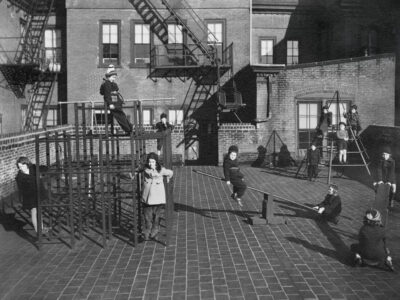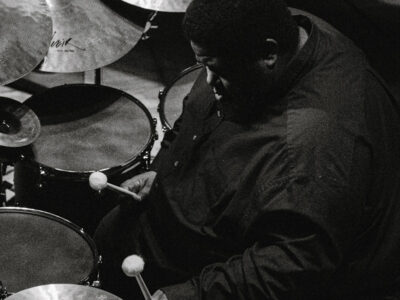
A new model for teaching mathematics.
“The old calculus sequences—the kind of problems you’d see in the AP Calculus curriculum—were developed in the 1950s and written down into big textbooks in the 1970s. But the problems that calculus was meant to solve—how to launch a satellite into space, how to build the best submarine, how to design an airplane—we’ve solved those already,” says Robert Ghrist, the Andrea Mitchell University Professor of Mathematics and Electrical Engineering, making the case for a curricular reform now underway at Penn. “What we have now are new problems: problems in robotics, in neuroscience, in the spread of misinformation, problems involving enormous systems of data. And the math needed to do these problems is more sophisticated, more in depth.”
With these ideas in mind, Penn’s math faculty overhauled the content and structure of its introductory calculus sequence last year to modernize the math taught and the way it is delivered. The department now runs on a “flipped classroom” model, meaning rather than quietly attending a traditional lecture, students are expected to come to class having previously reviewed that week’s material and being prepared to ask questions and work on challenging problems. Besides revamping the existing calculus courses that cater primarily to engineering, physics, and chemistry students, the department is also developing two new courses to focus on the modeling skills needed in business, economics, and the life sciences.
“The calculus program is the largest teaching program at Penn,” says Henry Towsner, an associate professor of mathematics. “Students studying physics or engineering take these classes, but also students studying biology or PPE [Philosophy, Politics & Economics], or students in Wharton. And calculus tutoring is the largest program at the [Weingarten Center]. When we make a change, it affects a huge swath of people.”
The department’s goal is to change the way students apply calculus across disciplines and get them to engage with math not as a set of procedures and formulas to be memorized, but as a living, breathing subject, where deep questioning and intellectual curiosity takes center stage—“a career-long mission of mine,” says Ghrist, who describes course creation as “an art.”
Ghrist [“Pure to Applied,” July|Aug 2015] initiated some of the first experiments in changing the math curriculum and also learned video production and animation to create slick, colorful videos—which now form the core material of the new courses. But he was far from the only figure involved in the changes.
Discussions go back to 2014, when the College received a grant from the Association of American Universities to “update our pedagogy, or our broader, conceptual approach to teaching,” notes Robin Pemantle, the Merriam Term Professor of Mathematics. Math faculty began to speak with other departments on how to best revise the curriculum to make students active members of the learning process. “We were sort of slowly talking to people, forming committees and things like that—but then the pandemic hit,” which accelerated the need for change, Towsner says. “We had to do something new.”
Flipped classrooms became the center of remote learning, as professors quickly learned that Zoom-delivered lectures created only distraction and boredom. Prior to a class meeting, students watched video presentations on that week’s material; during twice-weekly class meetings, half of an individual section would meet with their professor to ask questions and work on practice problems, while the other half worked with their TA.
Grading also changed: rather than the traditional two midterms and a final exam, students took weekly Friday quizzes. As a result, “students had to engage with the material all the time,” says Dennis DeTurck, professor of mathematics and the Robert A. Fox Leadership Professor, as opposed to being “laser focused on math for a week before the midterm or the final, but then drifting away from math toward the other things that they do.” This continuous engagement with the material meant that “we were able to teach more than we ever had,” he adds. “I got to topics I’d barely been able to cover in the past.”
When in-person classes resumed last year, the remote learning model—in which class sections were split in half, meeting with their professors one day a week and their TAs another—remained. But the model may not stay for long, as “what worked remotely may not work in person,” says DeTurck. “Splitting the sections this way is one example … it’s likely going to change in the future.”
Beyond class structure, another challenge has been getting students comfortable with being uncomfortable and being able to ask questions on confusing, demanding material during class time. “We don’t expect students to come into class with everything mastered,” says Andrew Cooper, senior lecturer of mathematics. “It’s uncomfortable, but not bad. High school is a lot different than college, and there’s always going to be an adjustment period.”
In some respects, this confusion—in which students understand some of the week’s material but not all of it—has led to exactly the sort of deeper engagement with mathematics aimed for under the redesign, says Brett Frankel, senior lecturer of mathematics. “I spend most of my class time with subtle discussion questions the students wouldn’t be able to get through themselves. … With the redesign, we have time for this kind of expert guidance.”
Not every student is on board with the new model. “I think the math department is well intentioned, but the lack of clear expectations and in-person instruction time made it difficult to get the most out of our classes,” says Aaron Rivera C’25. Emma Davey C’25 concurs: “The responsibility to learn the material was put solely on the student—I sat by myself in my room watching videos, instead of having my professor, an expert in their field, actually teach us the concepts.”
Some aspects of the redesign were positively received. Though it meant having to review math every Thursday night, Yi Xin Gwee W’25 grew to appreciate the weekly quizzes. “As tough as it was,” she says, “they forced me to understand each week’s concepts, instead of pushing review all the way to finals.” But she also found that the lack of in-person instruction time and reliance on videos made learning new material difficult. “In a classroom, you can at least raise your hand and ask for concepts to be explained in another way. But for the videos, you have to rewatch the same explanation a few times over in the hopes of gaining a sliver of understanding.”
Some of these issues have been acknowledged by the faculty. “It’s a big ship, and big ships take time to turn,” Cooper says. “The hardest part is definitely the expectation setting. I think the challenge for us is to be very clear about how things are going to work, that you’re not supposed to come in with everything mastered, that it’s important to ask questions about difficult material. As we gain experience, we’ll try to get better at it.”
Pemantle puts the redesign in context with other disciplines across the University. Students in humanities courses generally “come in with the expectation that they’ll have to do work outside of class time and think about the material on their own. In English class, students probably don’t expect that they’ll just regurgitate ideas, what the professor says,” he says. “We’re trying to do the same thing in math.”
This livelier, more animated version of mathematics requires a different mode of presentation by professors—and the process isn’t easy. “Working with students this way, trying to guide them through problems, is more nuanced and engaged than what we’ve done in the past,” Pemantle says, “and we’re constantly learning from each other while doing this.”
“We’re trying to make a safe space for [confusion and questioning] to happen,” Cooper adds. “I want everyone to know that you belong here, you can think about this, and move away from this anxiety about being confused in math class.”
—Daphne Glatter C’25




